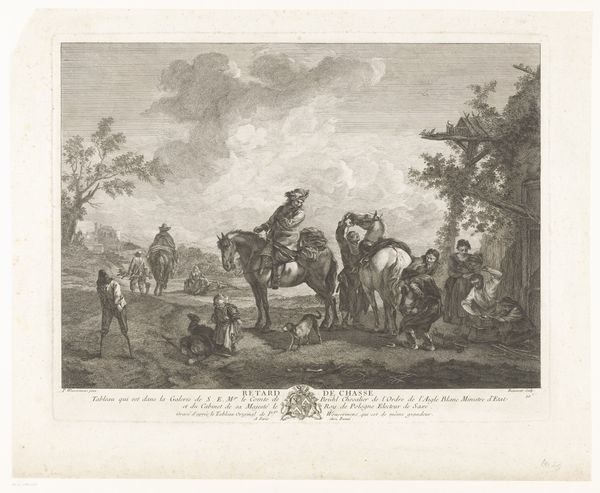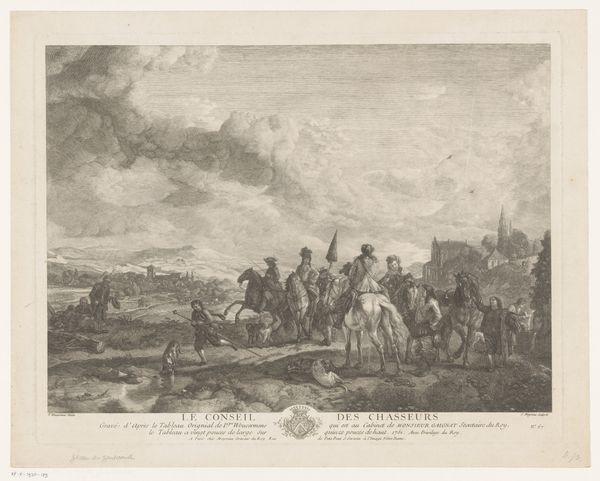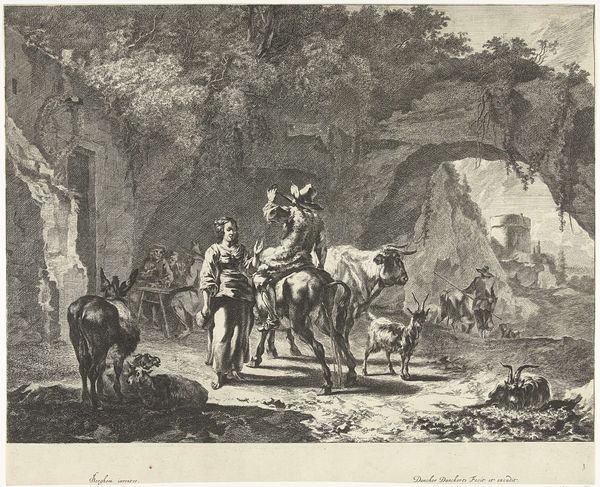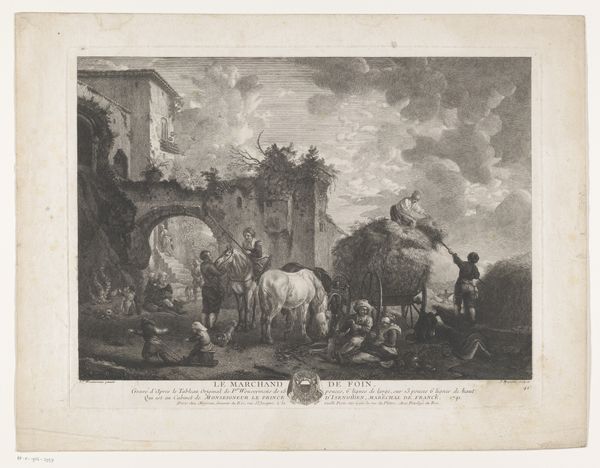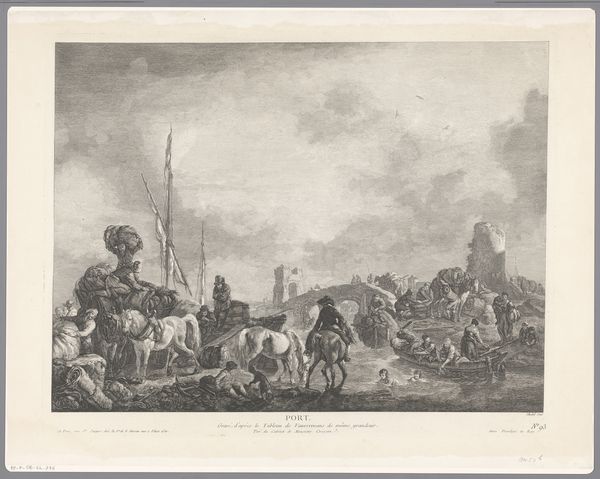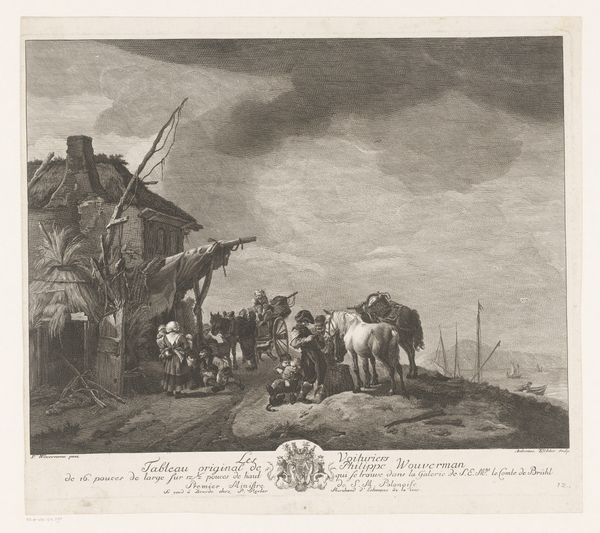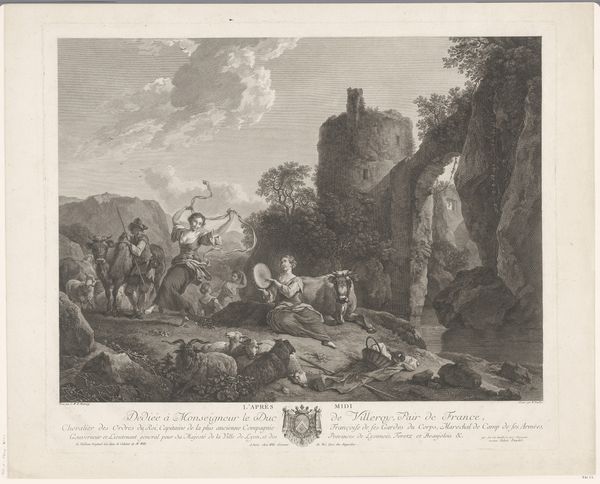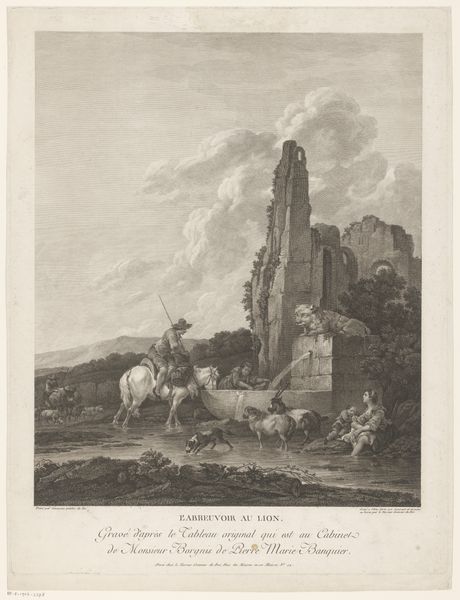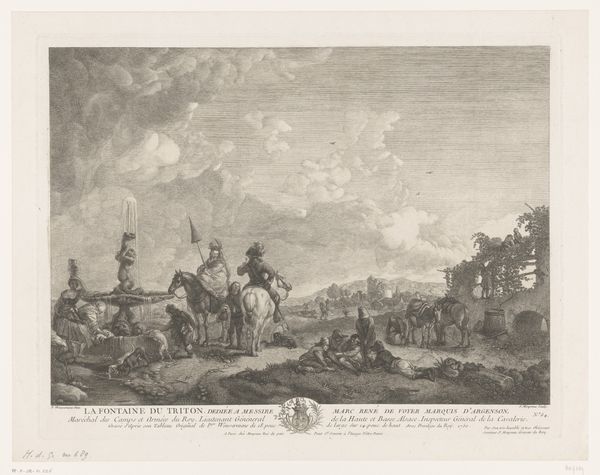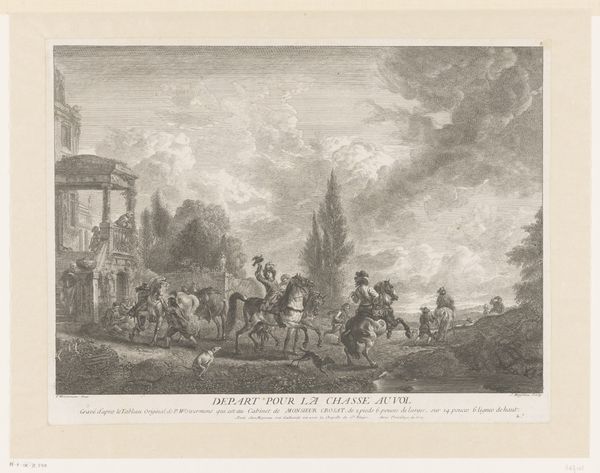
drawing, etching, engraving
#
pencil drawn
#
drawing
#
baroque
#
animal
#
etching
#
pencil sketch
#
landscape
#
pencil drawing
#
horse
#
genre-painting
#
engraving
Dimensions: height 384 mm, width 449 mm
Copyright: Rijks Museum: Open Domain
This print, “Ruiters en paarden bij een waterplaats” or “Horsemen and horses at a watering place,” was made by Pierre Etienne Moitte in the 1700s. The original was a painting by Philips Wouwerman. Moitte rendered the image on a copper plate, using tools like burins and scrapers to create lines and tonal effects. Consider the skilled labor involved in crafting this print. The engraver had to translate the tonal subtleties of a painting into the graphic language of line. The matrix could then be inked, and many identical impressions could be pulled from it. Prints like this played a crucial role in the 18th century art market. They allowed images of paintings to circulate widely, to be collected and studied. The print becomes a commodity, a relatively affordable luxury good. Think of it as the fine art world entering the age of mechanical reproduction. Ultimately, looking at this print makes us think about the many hands and processes involved. From the painter Wouwerman who initially conceived the image to Moitte, the printmaker, and the system that allowed these images to circulate. All this is tied to the wider social issues of labor, politics, and consumption.
Comments
No comments
Be the first to comment and join the conversation on the ultimate creative platform.

